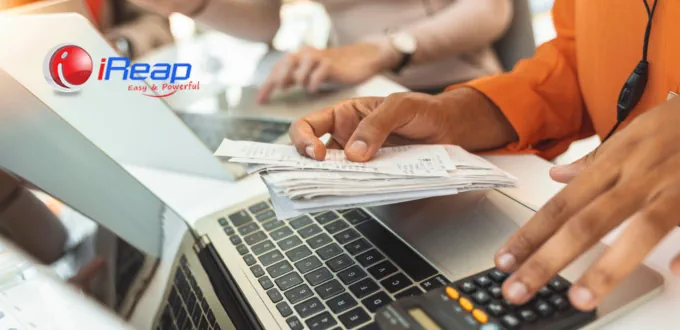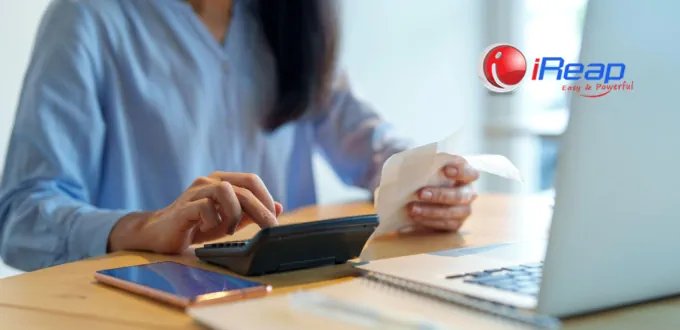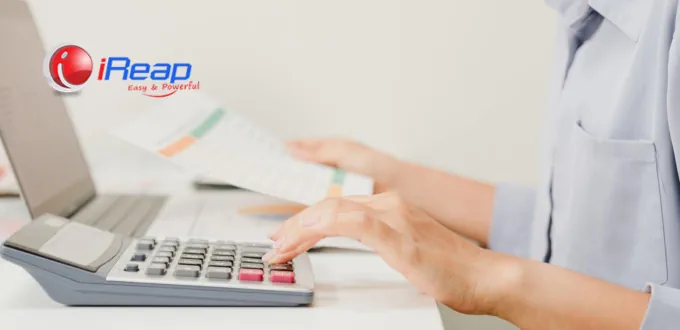
What is the meaning of proof of transaction? Proof of transaction is written evidence that records or records all transaction activities that occur in a business. Transaction proof function to prevent financial problems from arising in the future.
There are many kinds of transaction evidence, such as cash notes, receipts, debit notes, credit notes, sales invoices, purchase invoices, tax invoices, etc. Check in this article the various types of transaction evidence that generally exist in a business.
Types of Transaction Evidence
The company or business will print a payment receipt when a transaction occurs. This document is so crucial that companies are even willing to invest large sums to buy software for recording, creating, and storing proof of transactions.
Currently, many companies no longer use hardcopy to print transaction receipts. This is because a cashier application can already record transactions and create a transaction-proof soft file. You can even send the files directly to email or messaging applications like WhatsApp.
Even without a signature or stamp as validation, the validity of the transaction proof is not in doubt...
Usually, at the top or bottom of the document, there is a statement that the evidence is official. The recipient must also agree.
If there is a mistake, then when filing a complaint, the evidence can be helpful as a tool. You can do this by printing or showing the softcopy.
So, proof of transaction is not only in purchase or sales receipts. The following are types of transaction evidence:

1. Cash Note
You can easily find the use of cash notes in buying and selling transactions. Large-scale shops and stalls around the house have also used it as evidence of buying and selling.
The cash note contains information regarding the transaction date, the type of goods purchased, the quantity, the unit price, and so on.
Including discounts or rebates, if any. The lowest number written is the total transaction that the buyer must pay.
This evidence is significant when buying goods at a store that serves returns or returns of goods.
Usually, the shop will make the cash receipt into two files. The first file is for the buyer, while the second is stored in the store.
Cash receipts documentation will be helpful to shop owners when checking stock or taking cash.
Meanwhile, for buyers, cash notes help file complaints or want to return goods due to the use of uncomfortable goods, there are defects in the product, etc.
If you can’t show proof of the transaction when you file a complaint, the seller has the right to refuse to fulfill the complaint.
2. Receipt
Receipts are often used when cash payments occur. There is a column for writing the beneficiary’s name, the amount of money, the date of the transaction, and where to put the company’s official signature or stamp.
To know in full about receipts and how to make them, you can read the article entitled: how to make payment receipts. But briefly, some of the information that must be in the receipt, including:
- Date of transaction.
- Amount of money.
- Recipient’s signature.
- Signature submitting payment.
- Name of the money giver.
3. Debit Note
Debit notes are usually issued by the recipient of the goods or the one who delivers some money. This evidence is helpful when submitting a complaint due to an error in the transaction—for example, the price amount or the number of goods received.
From the submitting party, the function of the debit note is to straighten out the transaction so that the right can be accepted. As for the party issuing the goods, this memorandum is a tool for checking cash receipts.
In other words, a debit note is not a tool to bring each other down but a way to cross-check together.
4. Credit Note
A credit note is a follow-up form of a debit note. The officer will submit a credit note so that the finance department reduces the price and returns the overpayment.
Then the warehouse department will follow up on a credit note by processing the release of goods according to the shortage. These notes are also evidence of reporting transactions that have occurred.
5. Sales Invoice
A sales invoice is a document the seller makes as a bill for sales transactions. Then the seller hands it over to the buyer so that the buyer can make payments according to the nominal stated on the sales invoice.
Not only as bills, but sales invoices can also serve as valid evidence for compiling financial reports and tax reporting.
Required information on a sales invoice:
- Date of transaction.
- Company name.
- Number of items purchased.
- Price per unit or whole, including a discount if any.
- Company data that make sales and purchases.
- NPWP and VAT
6. Purchase Invoice
A purchase invoice is proof of a transaction stating that a purchase of goods or services has occurred.
Some of the information that you must include on the purchase invoice includes:
- Transaction number and the company’s name where the goods or services were purchased.
- Complete information regarding transaction details, starting from the name/type of item, the amount purchased for each item, the price, and so on.
- Discounts, purchase taxes, and total transactions are also included.
- Stamp that validates the transaction.
- Method of payment can be cash or tempo. If due, there will be a description of the due date and the installment amount. How long and how much is the installment?
7. Tax Invoice
In particular, buying and selling transactions, for example, property taxes, must be paid. For that, there is such a thing as a tax invoice. What is a tax invoice?
A tax invoice is proof of money delivery to the Directorate General of Taxes or DGT. It can be interpreted as a tax invoice as proof of a transaction stating that you have paid taxes.
The proof of purchase document is essential when an audit is carried out, both internally and externally.
In addition, this document will later serve as proof of reporting to the tax office that the company has fulfilled its obligations by applicable regulations.
8. Check
Checks are securities that contain payment orders from the party issuing the money to another party. A check is official proof of payment involving a bank as a payment intermediary.
In making transactions or disbursing money via check, the bank will verify. The point is to prove that the document contains cash and can be disbursed or received.
There are two types of checks that you must know, namely:
– Aan Order
Aan order or Check on Behalf is a check that lists the name of the beneficiary.
The officer will check that the customer who comes and takes cash is according to what is stated on the check, for example, by requesting to show an identity card (can be an ID card or driver’s license).
Likewise, if the funds stored in the check must be transferred, the bank will check the suitability of the account owner with the check recipient’s data. If different, the bank can refuse to cash the check.
– Aan Toonder
This second type of check is called a Check on Bearer. That is, the party issuing the statement does not require who can receive the funds in the review, so anyone who brings it can cash the bill at the bank.
9. Bilyet Giro
This form of payment is commonly used by two parties making large transactions. The payment method is by transferring several balances from one bill to another.
10. Bank Deposit Proof
Often need to pay more attention to proof of deposit to the bank when making transactions at the teller. This evidence is significant, you know.
When a failed transaction occurs, proof of deposit is provided. When the marketing has not been successful, this evidence is significant.
Therefore, wait to throw it away. Save until the transaction is successful. Several banks have changed the form of this evidence with different shapes and sizes. However, the function remains the same.
11. Current Account
A checking account is proof of going in and out of money in a savings account in detail—all types of transactions, whether through tellers, e-banking, or ATMs, will be recorded.
As a businessman, you will often need a checking account to determine the cash flow and financial health of both the person and the company. To get it, you can come to the bank and ask the clerk to print it.
12. Return note
An example of proof of the next transaction is a return note. As the name suggests, a return note is proof of a transaction that shows that the consumer has returned goods.
Returns apply if there is damage to the product purchased or specifications and completeness do not comply with standards.
To make a return, the consumer must bring a product purchase receipt along with the product to be returned. If the return is approved, the seller will issue a return note.
13. Cash In
This proof of purchase only exists within the company, usually attached to recording incoming money from product purchases, installments, investment returns, and others.
14. Cash Out
The opposite of cash in is called cash out, an example of transaction evidence for disbursing company funds. The finance department makes the cash book to complete information on reducing liquid assets in the form of cash.

Easy Ways to Record Transactions and Make Proof of Transactions with iREAP POS
If you want your business to increase, then one of the factors that you should pay attention to is the process of recording transactions that are detailed, clear, and easy to trace when needed.
Therefore, the process of recording transactions, bookkeeping, preparation of financial reports, and storage must be well organized. To facilitate this process, you can use iReap POS.
The iReap POS application can function as an easy and fast online transaction recording application, so you can monitor business developments in real-time, including checking stock-taking of goods only from the smartphone that you hold.
With the sophistication of the technology used, all data can be presented quickly and thoroughly. Even with various forms of graphs, they are making it easier to monitor.
To get complete information about iReap POS, check this website or click on www.ireappos.com. Professional staff will immediately assist you. Meanwhile, to fully explain how easy it is to create and record proof of transactions, you can read the article: 7 Ease of Transaction Processing Systems in the Android Cashier Application.



